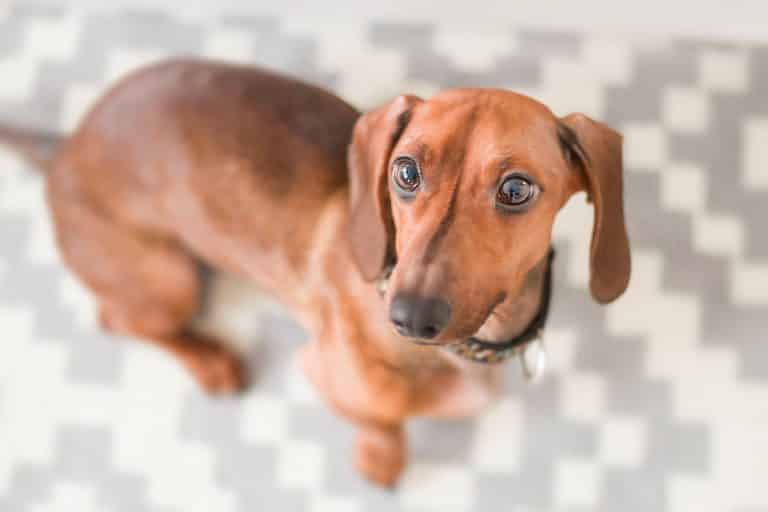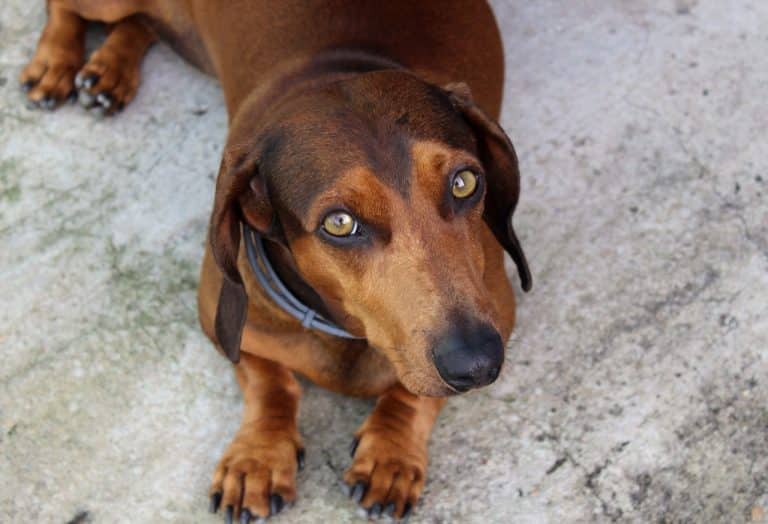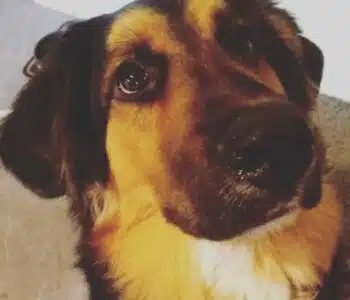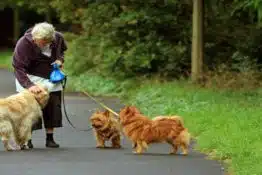
Dachshund: The Ultimate Guide of The Famous Sausage Dog
While small in stature, this little fellow is gargantuan in spirit. There are so many things to love about Dachshunds. They’re fun and playful, loyal, brave, smart, and affectionate. They are also an unending source of inspiration if all the Dachshund memes are anything to go by.
Because a Dachshund is purebred, you can find out a lot about your new buddies before you even meet them. Sure, individual dogs have their personalities, but if there is one advantage to having a purebred dog, it’s the fact that there are many traits that the entire breed shares. Before you decide to adopt a new family member, you need to know the basics about them to make sure they are a good fit for your home, so check out our facts you should know about Dachshunds. To help you prepare, here is a crash course on this loveable breed.
Best Supplements for Dachshund
For Dachshunds, consider joint supplements with glucosamine and chondroitin for spine and joint health. Omega-3 fatty acid supplements, like fish oil, can promote a healthy coat. A balanced multivitamin ensures they get essential nutrients, and probiotics aid in maintaining a healthy digestive system. Always consult your veterinarian before introducing supplements to tailor them to your Dachshund’s specific health needs.

- REAL MEAT FIRST: Blue Buffalo foods always feature real meat as the first ingredient; High-quality protein from real chicken helps your dog build and maintain healthy muscles; Plus they contain wholesome whole grains, garden veggies, and fruit
- FOR ADULT DOGS: BLUE Life Protection Formula adult dog food contains essential proteins and carbohydrates to help meet the energy needs of adult dogs, and features omega 3 & 6 fatty acids to promote a shiny coat and healthy skin
- ANTIOXIDANT-RICH LIFESOURCE BITS: A precise blend of antioxidants, vitamins and minerals carefully selected by holistic veterinarians and animal nutritionists to support immune system health, life stage needs and a healthy oxidative balance
- A NATURAL DOG FOOD: BLUE dry dog food is made with the finest natural ingredients enhanced with vitamins and minerals; BLUE contains NO chicken (or poultry) by-product meals, corn, wheat, soy, artificial flavors or preservatives

- Essential, high-quality protein for healthy muscle development, and carbs for energy for an active life.
- Calcium, phosphorus and essential vitamins for strong bones and teeth.
- Glucosamine is added for joint health and mobility support.
- Vitamins, chelated minerals and antioxidants contribute to your pup's immune system health.
- No corn, wheat, soy or chicken (or poultry) by-product meals.
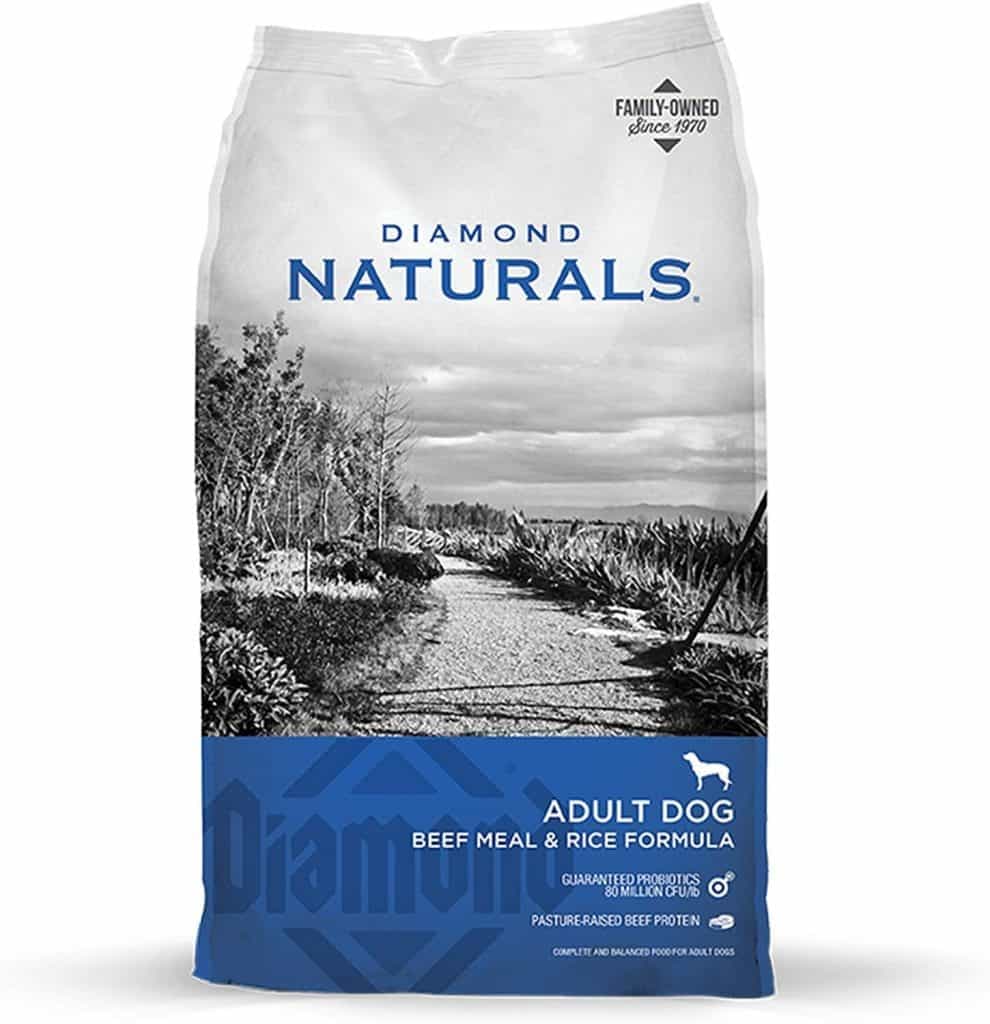
- Made in the USA by a family-owned company using quality ingredients from trusted domestic and global sources.
- With real pasture-raised beef protein as the #1 ingredient, this recipe helps support bones, joints, and lean, strong muscles.
- Beef protein provides energy and muscle building blocks, omega fatty acids promote skin and coat health, and superfood fruits like blueberries and oranges offer vitamins and minerals.
- Each serving includes species-specific K9 strain proprietary probiotics, plus antioxidants and prebiotics to help support healthy digestion, immune system health, and overall wellness.
- Made without corn, wheat, artificial flavors, or colors.
History of Dachshund, the Sausage Dog
“The name is a sign,” goes a (roughly translated) Latin proverb, and this particular breed has probably the most unusual name among dog breeds. What does Dachshund mean? In English, it would be something along the lines of a “Badger dog.” If you remember that the name is a sign, you should get a pretty good idea of what Dachshunds were bred to do.
Burrowing animals, such as badgers, cause a lot of damage to the property of the people who live in the countryside. To deal with these beasts more efficiently, the country folk bred a short-legged, long-bodied, fearless dog with such determination that, more often than not, it grows into sheer stubbornness. Badgers are no lambs, so Dachshunds had to be exceptionally brave to go against such a foe.
This breed has existed for about half a millennium now. During these 500 years, they have evolved from strictly smooth-coated pups of any color, over longhaired specimens that were used for hunting water-dwelling prey, to today’s plethora of varieties. The youngest sub-breed is the wirehaired Dachshund, whose less than soft coat protects them from scratches caused by thorny bushes while they rush through a forest in pursuit of their prey.
This breed comes from the country that has given us the world’s biggest beer festival, excellent cars, and Manuel Neuer, so its popularity in the US suffered a lot during World War I. After that, though, it skyrocketed, and not even World War II could diminish the love the Americans developed for Dachshunds. Currently, it occupies the 12th place in the American Kennel Club list of the most popular breeds, outranking Pomeranians, Huskies, and even Corgis. So, it is no wonder that it was a Picasso-approved pooch and made it to the top of our list of top 10 dog breeds for apartments!
3 Reasons Not to Adopt a Dachshund
Even though this breed boasts a plethora of positive qualities, its unique traits may not suit your lifestyle. When adopting a dog, it’s essential that they fit your habits and your home and family situation. Here are three reasons not to adopt a Dachshund:
- They’re incredibly stubborn.
- They don’t mix with little children.
- They’ll wreck your tulips.
They’re incredibly stubborn
Dachshunds are notoriously stubborn, which makes training them a considerable challenge. This is not a dog for first-time owners. They have their ideas of what they are supposed to do, and the only way to bend them to your will is to… Stop trying to bend them to your will, and try to bribe them. Even if you find a treat they’re crazy about and can use it as a reward for whatever it is that you’re trying to teach them, Dachshunds will focus on what they see as a more urgent matter at the moment. Like a fly. Or a feather on the floor. Or a leaf in the wind. Once they’ve found a target, you can kiss your training session goodbye.
They don’t mix well with little children
While Dachshunds are devoted and affectionate, they might not be the most patient breed out there. They won’t put up with nonsense, and small children pulling on their ears and pinching their necks might find a slightly colder welcome from a Dachshund than they would from a Golden Retriever. This breed is also incredibly loud, and their tendency to bark at everything—from a stain on your carpet to a TV commercial—might be a severe problem in households with babies.
They’ll wreck your tulips
Remember what Dachshunds were bred to do? Well, hunting badgers and rabbits includes a lot of digging. This breed will happily dig in your garden, destroying all your beautiful flower beds in the process. Because digging is what they were made to do, you can’t teach them not to do it. You can try to direct them to a digging corner you’ve put aside just for them, but at some point, they’ll probably chase a butterfly to your part of the garden and make themselves at home.
3 Reasons to Adopt a Dachshund
We all have our strong and weak points, and so does this breed. Whether the advantages outweigh the disadvantages is up to you, so here are the three reasons to adopt a Dachshund:
- They make fantastic watchdogs.
- They improvise. Adapt. Overcome.
- They’re low maintenance.
They make fantastic watchdogs
If you need a watchdog, Dachshunds’ tendency to bark can come in handy. They are always on alert, and their suspicious nature makes them great at alarming you of any strangers who might be trespassing. They won’t be overly friendly to people they don’t know, and there is little chance of them being bribed with food once they set their mind on protecting their humans and territory.
They improvise. Adapt. Overcome.
Dachshunds don’t fuss over changes. New bowl? Sure. Threw out their old bed and bought a new one? No problem. Moving to another state? Fine by them. This breed is one of the most adaptable, which is fantastic for anyone who moves around a lot. If your job forces you to travel a lot and stay away from home for extended periods, your Dachshund won’t mind moving with you. They rarely get attached to things. When they do, though, you’d better not forget their favorite toy!
They’re low maintenance
Dachshunds typically don’t shed a lot. You don’t need to spend hours brushing them, and, aside from their ears, they don’t have any saggy or wrinkled parts that can be home to fungi. There are no special requirements for Dachshund maintenance—regular baths, short brushing, and nail clipping is more or less all you’ll have to do.
Appearance, Personality, and Traits of a Dachshund
Dachshunds are famous for their short legs and elongated “sausage” bodies. The weird proportions are a part of their charm, but these dogs look the way they do for a reason. Since the purpose of a Dachshund was to hunt burrowing animals, they needed to be able to move around in narrow underground tunnels, and short legs made this task much more manageable. Their snouts are long, and their ears are large and floppy. The tail is incredibly sturdy—the hunters used to pull the dogs out of the dens by their tail. Black and brown are the most common, but they come in many other colors, such as:
The coat of the smooth variety is short to medium and straight in texture. Longhaired Dachshunds have longer hair, and it’s slightly wavy, while the Wirehaired variety has rough overcoat and soft undercoat. If a Dachshund wasn’t tiny enough as it is, they come in two sizes—standard and miniature.
Dachshunds tend to be playful and even mischievous. They’ll get in trouble from time to time—if you leave them alone for a long time with the bathroom door open, expect toilet paper bits everywhere when you come home. They’re affectionate with their humans, but can be suspicious of strangers, so it’s essential to socialize them early. They’re not great with kids because they tend to get a bit snappy if their patience is being tested.
Their curious nature will have them butt in on everything you do, so don’t be surprised if they become argumentative when you don’t show them what’s in the bag you’ve just brought into your home. The stubbornness of a Dachshund is a trait so developed that you have no choice but to respect it and fear it deeply. They won’t be told what to do—they’ll simply do what they believe needs to be done. That makes them difficult to train, so they’re not a great choice for first-time dog owners.
| Weight | Miniature: 11 pounds or less
Standard: 16–32 pounds |
| Height | Miniature: 5–6 in at the shoulder
Standard: 8–9 in at the shoulder |
| Size | Standard and miniature |
| Coat type | Three varieties:
|
| Coat color | Variety of colors and patterns |
| Shedding | Low to medium |
| Eyes |
|
| Nose |
|
| Ears | Big and floppy |
| Temperament | Playful, determined, affectionate |
| Life expectancy | 12–15 years |
| Hypoallergenic | No |
| Kid-friendly | No |
| New owner friendly | No |
| Breed recognition | Recognized by AKC in 1885 |
Are Dachshunds Easy to Train?
Nope. Despite their intelligence, this cute breed can be a nightmare to train. If you’re a first-time dog owner, you’d better be equally as determined and much more disciplined than your new best buddy—otherwise, they’ll train you. This particularly refers to potty training.
It’s not that they don’t know what you want from them—usually, they’re well aware of that. Even though they’ll love you with all their little hearts, they’ll be confident in their judgment. They’ll know they should do their business outside, not inside, but they hate wet weather. So, why go out in the rain if you can pee on the floor? They’ll sit if it suits them, even if it’s just to get on your good side—but never if there is something suspicious going on, like that mean-looking ladybug buzzing around creepily.
Dachshunds pose a challenge even for experienced trainers, so don’t adopt them if you’re not confident in your dog-training abilities. Here are the best ways to train a puppy and dog training mistakes to avoid.
How Well Do Dachshunds Do in Families?
A Dachshund is incredibly affectionate and will love every member of their pack. However, families with little children should probably find a more child-friendly breed.
Dachshunds won’t go out of their way to be mean to children—but they don’t have a soft spot for them either. Children tend to get a bit overly pushy with animals, and this breed won’t tolerate that for long. Their patience is quite limited, so if you let your kid pick on them, expect the Dachshund to retaliate.
They like to bark too. If there is anything at all worthy of noise—a leaf touching the outer side of a window, for example—this dog will talk about it. Depending on how much patience you have, it can be adorable or annoying, but this level of noise is beyond doubt undesirable in a home with a baby.
Dachshunds can do exceptionally well in families with older children, but avoid bringing them into a family with very young kids.
How to Groom Dachshunds
Dachshunds are relatively low maintenance when it comes to grooming. The smooth variety needs monthly bushing, and you don’t need to bathe them regularly. When you do, make sure you use all natural dog shampoos. Unfortunately, all Dachshunds tend to roll in things that smell pleasant to them (and usually not to you), so you’ll need to bathe them when needed, instead of on schedule. Longhaired and Wirehaired Dachshunds require weekly brushing, and Longhaired Dachshunds will need to be bathed and blow-dried regularly to keep their coat healthy and soft.
You’ll need to inspect their ears at least once a week and clean them using a cotton ball and a cleaning solution. Do not use a cotton swab for safety reasons. In addition to this, you’ll need to clip their nails regularly. You should never hear them clicking on the floorboards. Once or twice a month should do the trick.
The most challenging thing about Dachshund maintenance, though, is regular teeth brushing. In a perfect world, you’d do it daily. In reality, you can get away with three times a week—just make sure you find a good dental chew. Check out our guide on 10 best dog dental chews and keep those gums clean and healthy.
| Brushing frequency | Brushes for Dachshunds |
|
|
Common Health Concerns in Dachshunds
The most important health concerns in Dachshunds are the following:
- Intervertebral disc disease. This happens when one or more discs that separate the bones of the spine break degenerate. It’s a painful back condition, and it causes weakness and numbness in either the upper or lower part of the spine. It affects Dachshunds more than any other breed and is, therefore, the number one health concern.
- Bloat. If your pooch suffers from this condition, their stomach expands with air, and this can lead to a much more severe health issue, known as gastric torsion, in which the stomach twists around and cuts off the blood supply. It happens suddenly and can kill your dog in a matter of hours. If your Dachshund shows any signs of bloating, schedule an appointment with your vet asap.
- Obesity. Dachshunds live to eat and tend to gain weight fast, so you must dose their portions properly. Obesity can increase the risk of back problems and affect their hearts, lungs, and joints.
- Hyperthyroidism. The lack of thyroid hormones causes this condition. It may seem like your buddy is gaining weight, so if their diet and exercise regimen hasn’t changed, a visit to your vet may be necessary.
- Eye problems. Dachshunds can suffer from glaucoma, cataract, and progressive retinal atrophy (PRA). Glaucoma happens because of the excess fluid in the eye. It is hereditary and often leads to blindness. A cataract causes the dog’s eyes to become opaque and clouded. It can lead to blindness or impaired vision, and there is no known cure for it. PRA happens slowly over time and is easily overlooked. The common symptoms are night blindness and dilated pupils. It can lead to blindness, and the cure hasn’t been found so far.
- Skin problems. Dachshunds have sensitive skin and are prone to skin issues, including dermatitis. If you notice that your little fellow’s coat is thinning or getting flaky or they’re scratching too much, make sure you visit your vet to see what the issue is and how to treat it.
- Acanthosis Nigricans. This condition is unique to Dachshunds. It is unclear why it happens, but it’s not dangerous, and it manifests through thickening or darkening of the skin around the dog’s armpits or groin area.
Even when everything seems fine, it is wise to take your Dachshund to the vet for a physical, knee, and eye examination. Many of these health conditions can creep up on you and your pooch, so it’s better to be safe than sorry. Learn how to take care of your pooch’s joints properly and how to keep them happy and healthy at all times!
Another important health concern that you may not notice at first are Dachshund seizures, so it’s vital you learn how to recognize them.
| Major concerns | Minor concerns | Occasional tests |
|
|
|
What Does a Dachshund Eat?
Due to their small stature, Dachshunds shouldn’t eat a lot. Around 1.4 cups of food is the recommended daily dose, which should be given in two meals. Theoretically, you can dump it all at once, but that increases the risk of bloating, which is something you should try to avoid.
High-quality food can help your Wiener dog avoid many health issues, so try to get the best food possible. Make sure to use the appropriate kind—find good puppy food for the little ones, because they have different needs from grown-up dogs (check out our guide on 10 best puppy food brands). Your dog might prefer canned (we also wrote about 10 best wet food brands) or dry food, so consider their taste, especially if you’re dealing with a picky eater. Here are some suggestions:
- Wellness CORE Small Breed Recipe. This is a grain-free option, but it includes plenty of high-fiber ingredients to ensure your buddy’s proper digestion. It is based on turkey, and there are added probiotics and prebiotics.
- Blue Buffalo’s Small Fish & Brown Rice. Produced in the USA, this high-quality food is based on fish. If your Dachshund is a fish-lover, this is the way to go. There are vitamins, minerals, and probiotics added to make sure your little fellow has everything they need to be happy and healthy.
- Taste of the Wild Appalachian Flavor Small Breed Dog Food. The first listed ingredient in this dog food is real venison, which will probably be highly appreciated by your little hunter. There are three different probiotics to ensure proper digestive health of the dog, and the kibble size is small, so even the miniature Dachshunds with their tiny jaws shouldn’t have any problems with it.
If your tiny pup really likes their dry food, you might want to pick one of the 10 best small breed dry food brands. Avoid giving them kibble made for bigger dogs as it can be too much for their short stature.
How Much Exercise Does a Dachshund Require?
Dachshunds don’t require too much exercise, but you can’t expect them to be couch potatoes either. A standard Dachshund typically needs about an hour’s worth of activity daily, and a miniature one typically requires half that time.
The best way to go about it is to break it in thirds—two walks and one playing session a day. For miniature Dachshunds, you’ll need two 10–15-minute walks and one 10–15 minutes’ playing session. For standard variety, just double the time. Never let your Dachshund run up or down a set of stairs because they can hurt their back.
These are general requirements, so they don’t apply in every situation. If your dog is overweight, you’ll want them to do more exercise. If they have a physical problem, you should probably cut them some slack.
Check out this adorable video of cute Dachshund puppies:
Like Dachshunds as Much as We Do?
If you love Doxies, you will listen to our advice on how to take care of them. If you feel like you’re doing a good job, treat yourself to a Dachshund gift or two. Then, check out our guides on Dachshund mixes!
FAQs: Dachshunds
Q1: What does “dachshund” mean in English?
A: “Dachshund” translates from German to English as “badger dog.” The breed was originally developed for hunting badgers due to its distinctive long body and short legs.
Q2: What does “dachshund” mean?
A: The term “dachshund” is of German origin and means “badger hound” or “badger dog,” reflecting the breed’s historical purpose as a skilled badger hunter.
Q3: What is acanthosis nigricans in dogs?
A: Acanthosis nigricans in dogs refers to a skin condition characterized by dark, thickened, and velvety skin. It can be associated with various underlying health issues and often requires veterinary attention.
Q4: How much exercise does a dachshund need?
A: Dachshunds are an active breed and generally require moderate exercise. Daily walks, playtime, and mental stimulation are essential for their well-being.
Q5: What is a “chow weenie dog”?
A: “Chow weenie dog” is not a recognized breed. It might be a playful term referring to a crossbreed between a Chow Chow and a Dachshund.
Q6: How many teeth do dachshunds have?
A: Adult dachshunds typically have 42 teeth, including incisors, canines, premolars, and molars.
Q7: How much exercise do dachshunds need?
A: Dachshunds benefit from regular exercise, including walks and playtime. Their energy levels vary, but daily physical activity is crucial to prevent weight gain and maintain their overall health.
Q8: Why do dachshunds hate rain?
A: Some dachshunds may dislike rain due to their low-to-the-ground build and the fact that they are more prone to getting wet and cold. Providing them with rain protection, such as a coat or shelter, can make rainy walks more enjoyable for them.
References
- https://en.wikipedia.org/wiki/Dachshund
- Jensen, V. F., and K. A. Christensen. “Inheritance of Disc Calcification in the Dachshund.” Journal of Veterinary Medicine Series A, vol. 47, no. 6, 2000, pp. 331–340., doi:10.1046/j.1439-0442.2000.00297.x.
- Beauchesne, Ryan. Crusoe, the Celebrity Dachshund: Adventures of the Wiener Dog Extraordinaire. St. Martins Griffin, 2015.



